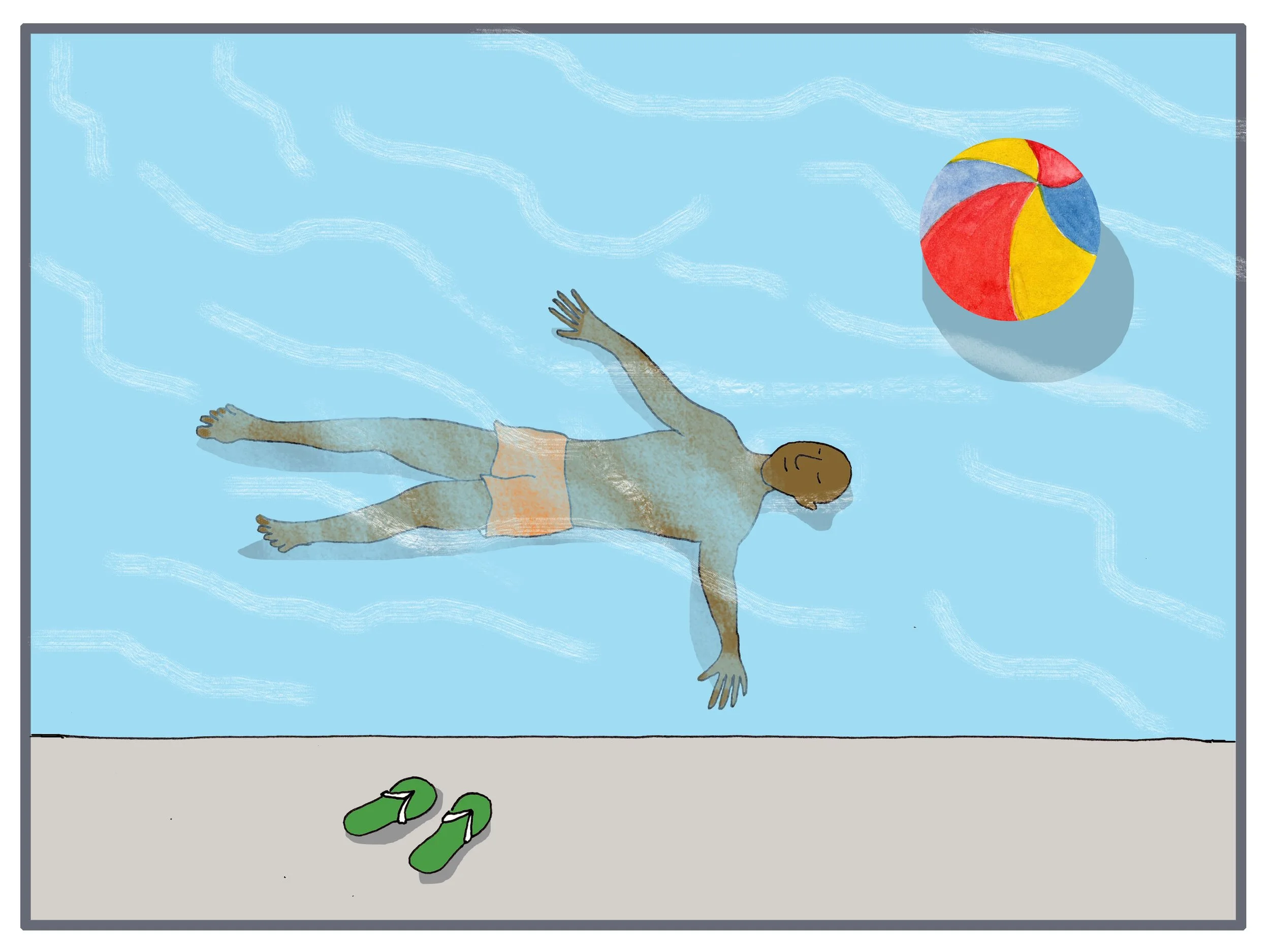The Backwards Law
Why Doing Less Can Help Us Feel (and Function) Better
Sometimes, the harder we try to feel calm, focus, or “get it together,” the more restless and on edge we become. We might tell ourselves to relax or stop thinking about it—and yet our minds keep racing, our emotions run high, and the tension builds.
This paradox is at the heart of what philosopher Alan Watts called the backwards law, also known as the law of reverse effort. It’s rooted in wisdom traditions but shows up in the most ordinary moments. Think about floating in water: the more you thrash, the more you sink. Relax, and you float.
The backwards law reminds us that pushing harder isn’t always helpful—especially when it comes to our inner states. Whether we’re dealing with big feelings, a restless mind, or the pressure to perform, the act of forcing change often backfires. Instead, the key is to soften.
What Is the Backwards Law?
The backwards law is the simple but often counterintuitive idea that trying too hard can make things worse.
Examples:
Trying to “force” calm often heightens anxiety.
Straining to quiet the mind can make thoughts feel louder.
Focusing too much on feeling better can amplify what’s wrong.
The effort itself becomes part of the problem—like shaking a snow globe and expecting it to settle. The more we stir the waters, the murkier they get.
Instead of doubling down, the backwards law invites us to ease up and soften—not as a form of giving up, but as a way to allow space for the natural settling process to happen.
Why Softening Works
Softening works because it reduces the extra pressure we place on ourselves. When we stop demanding an immediate fix, our nervous system can return to balance more naturally.
Physiologically, easing up lowers the sense of threat in the body, allowing the parasympathetic ("rest and digest") system to engage. In emotional terms, it builds trust—both with ourselves and, when we’re with others, with them.
If anyone's told you to "calm down" in the heat of the moment, you know how ineffective and frustrating that advice can be. But when you're given a quiet moment, a little space, and permission to be as you are, that type of support often leads to relief.
The Backwards Law in Real Life
While this principle applies in the workplace, relationships, and personal well-being, it's also highly relevant for parenting and teaching.
With kids: Instead of “You need to get over it,” try, “It’s okay to take a minute. Would you like to sit here quietly or get some fresh air?” This gives the child permission to pause and a couple of options to help them self-regulate.
With ourselves: After a stressful meeting, beating yourself up about your performance can backfire. But giving yourself five minutes to take a walk, sip water, or look out a window can shift your state without force.
The backwards law is not about ignoring problems—it’s about changing the quality of your approach, moving from pushing to allowing.
Applying the Backwards Law: A Three-Step Practice
Here’s a simple way to practice in your daily life:
Step 1: Notice the Push
When you’re feeling tense, stuck, or frustrated, ask:
Am I trying to force a change in how I feel or think right now?
Am I clenching, rushing, or mentally “pushing”?
Step 2: Soften
Instead of adding more effort:
Take one slow breath, letting your shoulders drop.
Loosen your jaw, unclench your hands.
Let your awareness open to take in your surroundings.
Step 3: Allow Space
Rather than rushing to “fix” the moment:
Allow yourself to pause before acting.
If with someone else, offer choice or space instead of commands.
Trust that settling may happen without you making it happen.
Tips for Practicing (and Sticking with It)
Pair softening with a familiar cue. Every time you notice your hand on a doorknob, take a breath and soften your shoulders.
Practice in neutral moments. It’s easier to learn this skill when you’re not in crisis—so try it while waiting in line or sitting in traffic.
Name it. Saying to yourself, “I’m softening,” “I’m easing up,” or “I’m leaning back instead of leaning in” can help anchor the intention.
Model it for others. If you lead a team, care for kids, or interact with people under stress, let them see you pause, breathe, and soften your tone instead of pushing forward.
Common Misunderstandings
Softening is not:
Pretending nothing is wrong
Resigning yourself to feeling bad forever
Avoiding necessary action
It’s about choosing how you meet the moment. When you meet it with openness, less strain, and more warmth, then you’re more likely to respond compassionately and effectively.
Reflection Questions
You might keep a small notebook or notes on your phone and explore:
When has pushing harder made things worse for me?
What happened the last time I allowed space instead?
How could I build softening into my daily routine?
Closing Thought
Sometimes, doing less really does help more happen. The backwards law isn’t a magic trick—it’s a shift in mindset that leads to a shift in behavior and perspective. When we stop struggling to change our inner state, we create the conditions for genuine change to emerge naturally. In that shift, we often find the ease, clarity, or focus we were chasing all along.
